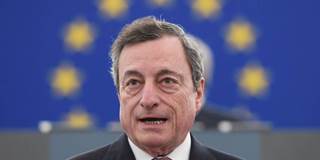With the European Central Bank having recently ended quantitative easing, three conclusions seem obvious: the ECB’s asset purchases had important macroeconomic benefits; the political costs of QE were much greater than anyone expected; and the whole episode was truly awful for the Bundesbank.
ZURICH – With the European Central Bank having recently ended quantitative easing (QE), this is an appropriate time to reflect on the policy’s impact. Three conclusions seem obvious: the ECB’s asset purchases had important macroeconomic benefits; the political costs of QE were much greater than anyone expected; and the whole episode was truly awful for the Bundesbank.
By reducing the cost of bank loans through QE, the ECB encouraged lending to small firms and households across the eurozone. That gave an important boost to economic growth, leading to marked falls in unemployment and upward pressures on wage costs. Although headline inflation rose, underlying inflation remains weak, meaning that the ECB must maintain an expansionary monetary policy.
Furthermore, QE in Europe and elsewhere over the past decade has disproved a number of assertions about central-bank asset purchases. Chief among these is the oft-repeated claim that large-scale central-bank purchases of government bonds invariably results in high inflation. Financial crises lead to a surge in demand for liquidity as financial institutions worry about the solvency of other players. Central banks can and should satisfy that demand by expanding their balance sheets, because not doing so can lead to a collapse in the money stock and a deep recession, as the US Federal Reserve demonstrated in the early 1930s.

ZURICH – With the European Central Bank having recently ended quantitative easing (QE), this is an appropriate time to reflect on the policy’s impact. Three conclusions seem obvious: the ECB’s asset purchases had important macroeconomic benefits; the political costs of QE were much greater than anyone expected; and the whole episode was truly awful for the Bundesbank.
By reducing the cost of bank loans through QE, the ECB encouraged lending to small firms and households across the eurozone. That gave an important boost to economic growth, leading to marked falls in unemployment and upward pressures on wage costs. Although headline inflation rose, underlying inflation remains weak, meaning that the ECB must maintain an expansionary monetary policy.
Furthermore, QE in Europe and elsewhere over the past decade has disproved a number of assertions about central-bank asset purchases. Chief among these is the oft-repeated claim that large-scale central-bank purchases of government bonds invariably results in high inflation. Financial crises lead to a surge in demand for liquidity as financial institutions worry about the solvency of other players. Central banks can and should satisfy that demand by expanding their balance sheets, because not doing so can lead to a collapse in the money stock and a deep recession, as the US Federal Reserve demonstrated in the early 1930s.